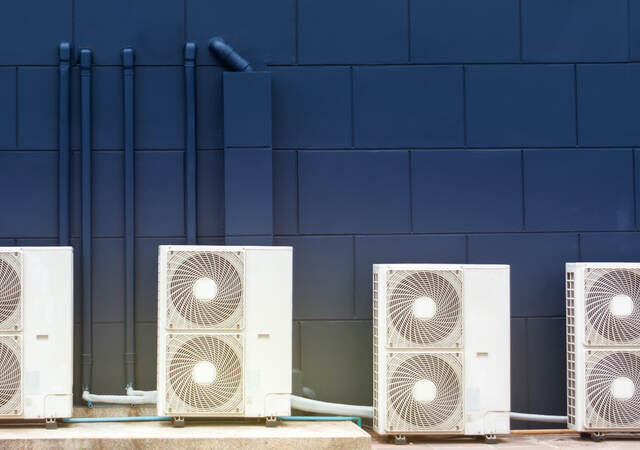November 29, 2023
Expanding use and applications for heat pumps
Heat pumps are not new technology. They have long been utilized in residential applications to improve the efficiency of HVAC systems, reducing overall energy costs. As a simple description, a heat pump is a mechanical refrigeration system that is engineered to operate in a reverse mode, producing heating instead of cooling.
In recent years, there has been a trend of new and increased applications for this technology coming from two primary drivers:
- Advances in technology – Electronic controls, electronic refrigerant metering, and variable speed motors and compressors allow for more efficient and sophisticated systems. They are able to operate in a wider variety of climates and form factors.
- Energy efficiency, electrification, and decarbonization – Energy codes and regulations are driving many of these trends to reduce energy demands and CO2 emissions. In this context, electrification and decarbonization largely refer to replacing gas-fired appliances with electric heat pumps and the use of more energy-efficient appliances.
A traditional electric resistance heating element converts almost 100% of the input electrical energy to heat. By leveraging the refrigeration cycle, a heat pump can move heat energy equivalent to 200% or more of the input electrical energy.
Examples of growing heat pump applications
- Cold climate and geothermal heat pumps – These heat pumps are able to maintain their rated heating capacity at a lower outdoor ambient temperature. As a result, the geographical area where heat pumps are viable is expanding.
- Variable refrigerant flow (VRF) heat pumps – These systems are optimal for buildings that simultaneously have heating and cooling loads. While one zone is being cooled, the heat removed from this zone can be utilized by another zone requiring heating.
- Reverse operation, thermal battery storage and heat recovery chillers – Air-to-water or water-to-water chillers can be engineered to operate in heating mode. Instead of rejecting waste heat from cooling, these systems can capture, store, and reutilize the heat removed from the building.
- Heat pump water heaters – Includes tank-type storage water heaters as well as supplementary heaters, which pre-heat incoming water using waste heat from air conditioning systems.
- Appliances such as dishwashers and clothes dryers – Any appliance that has traditionally produced heat via electric resistance heat has the potential to be a candidate for heat pump technology.
- Air-to-water heat pumps for retrofit – These heat pumps are optimal for the renovation of existing spaces where water-heated radiators are installed. They can reach higher temperatures than first heat pump generations, allowing retrofit without the need to renovate the full heat distribution system.
- Codes and standards – The trend of expanded use of these mechanical systems coincides with the industry transition to refrigerants, which have lower Global Warming Potential (GWP). Model codes, installation standards and product standards have been developed to address both the new technology and refrigerants to provide requirements for their safe use. It is more important now than ever to adopt and refer to the latest codes and standards.
- ASHRAE installation standards – The following AHSRAE standards form the basis for installation requirements in coordination with model codes and product standards: ASHRAE 15 Safety Standard for Refrigeration Systems, ASHRAE 15.2 Safety Standard for Refrigeration Systems in Residential Applications, and ASHRAE 34 Designation and Safety Classification of Refrigerants.
- UL Standards – The following UL Standards contain safety requirements for the appliances referenced above: UL 60335-2-40, the Standard for Household And Similar Electrical Appliances, UL 921, the Standard for Commercial Dishwashers, and UL 2158, the Standard for Electric Clothes Dryers.
For more information on heat pumps certified by UL Solutions, refer to UL Product iQ®, UL Solutions complimentary certification database, and search with "heat pump." Access to the code authority features of Product iQ requires a simple one-time registration.
Stay informed
Actionable insights on the topics you choose, delivered directly to your inbox.


